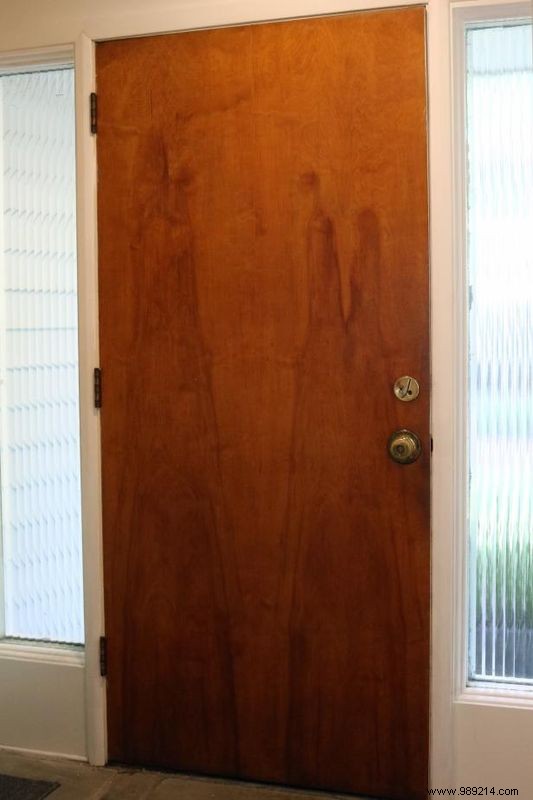
before

After
Updating an entryway is often as easy as repainting the front door, but what if you don't want the permanence of paint or want a particular pattern or finish? Adhesive vinyl wallpaper is an affordable, semi-permanent solution that offers beautiful results and comes in a range of patterns that rivals traditional wallpapers.
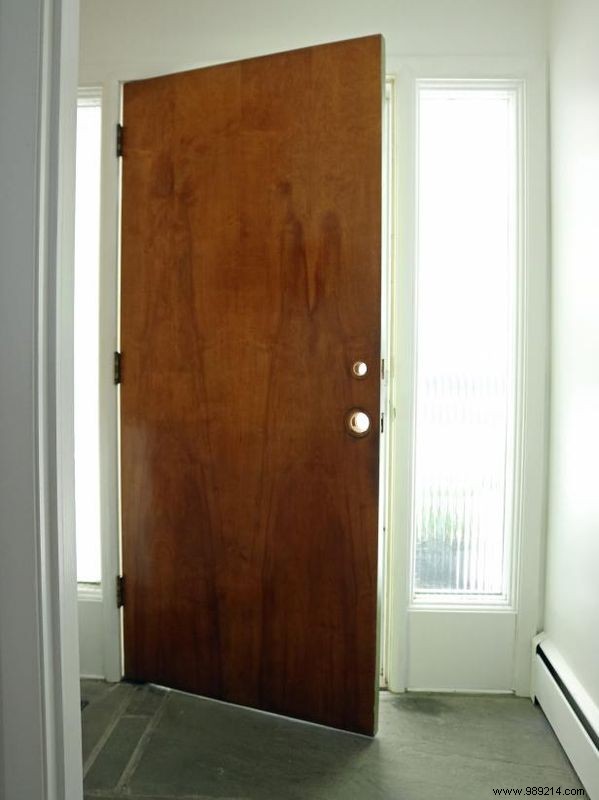
Remove the door knob and other hardware. Thoroughly clean and dry the door surface to remove dirt, fingerprints and dust.
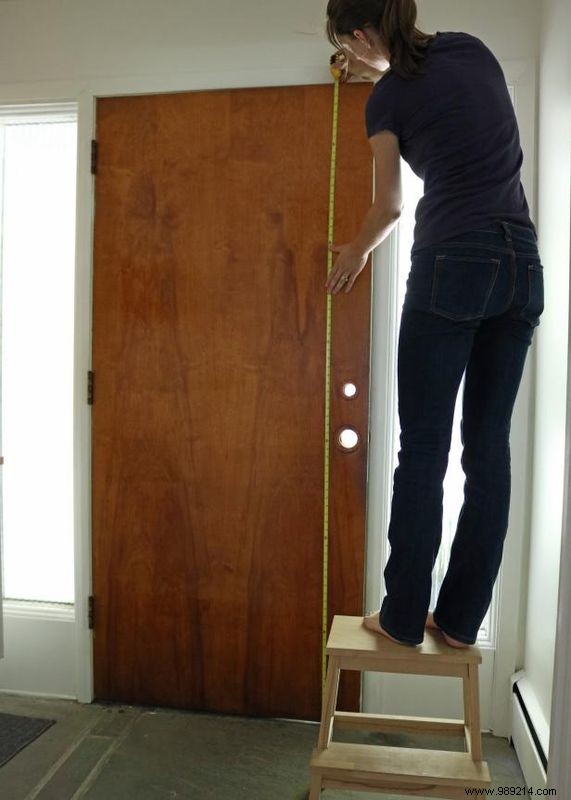
Measure the width and height of your door to determine how many strips of wallpaper are needed to cover the surface (2-3, depending on the width of your roll). Note that the panels will need to overlap a bit. If you're using patterned wallpaper, be aware of how often the pattern repeats.

Trim lengths of wallpaper from the roll, leaving a minimum 1/2” excess at the top and bottom to account for changes during application. The excess will be trimmed later.
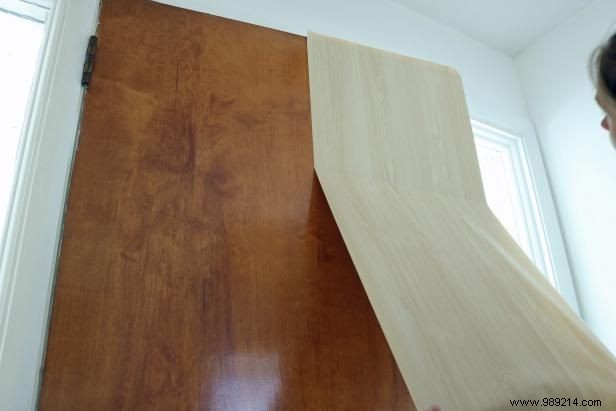

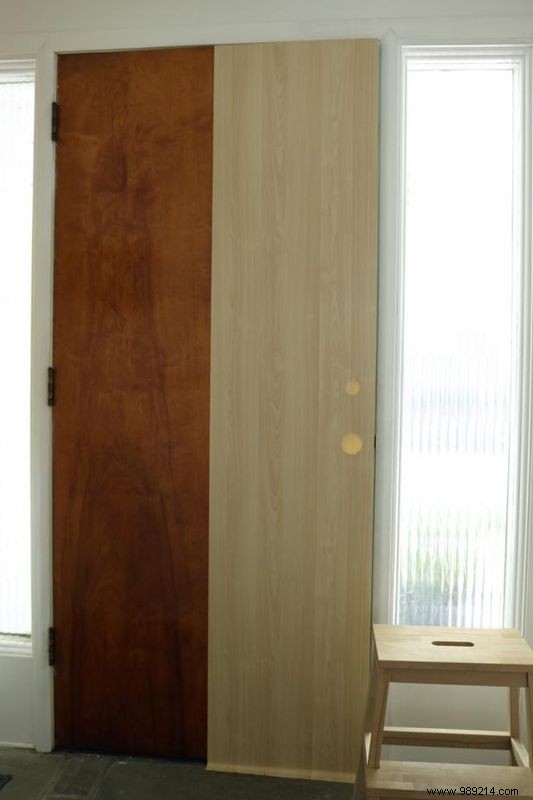
Remove the adhesive wallpaper backing from one end of the panel and align the edge of the wallpaper so that it is perfectly flush with the edge of the door. Use gravity to your advantage and work from the top of the door to the bottom (Image 1). Use the stiff spine of a hardcover book to smooth out bubbles from under the vinyl while continuing to slowly separate the contact paper from the wallpaper backing.
Adhesive vinyl wallpaper is extremely easy to work with because it is forgiving. If large bubbles appear between the door and the paper or if the paper is uneven, it is peeled off and reapplied without stretching or tearing (Image 2).
If you start to notice small bubbles that cannot be smoothed out, you can correct them by pricking the surface of the vinyl with a sewing needle to release the air. Try this method on an inconspicuous area first, the small holes left by the needle should not be visible, but should be large enough to release trapped air.
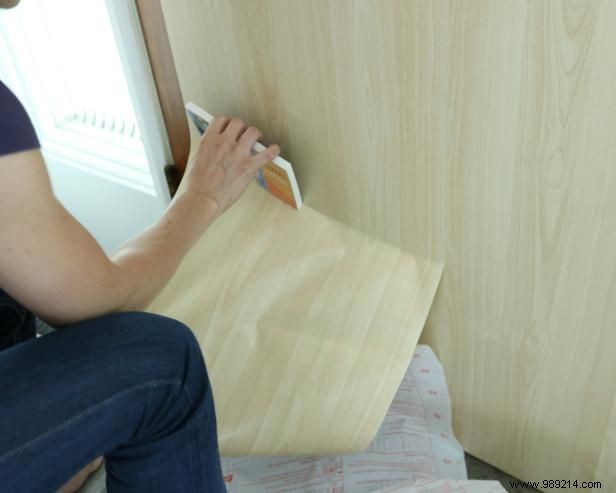
Work slowly from top to bottom when installing the remaining panels of wallpaper. Make sure the patterns line up so the seams are hidden.



When you find the hinges, use a utility blade to trim the vinyl (Image 1). Use the utility knife to cut the vinyl covering the knob and latch holes (Image 2).
You will have excess wallpaper at the top and bottom of the door. It may be tempting to fold it over if the bond is strong, but you can use the utility blade to trim off the excess.

Reinstall existing hardware (or use it as an opportunity to upgrade)